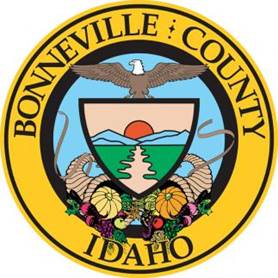With special thanks, we wish to acknowledge the support and generous consideration made to The Red Guide to Recovery from the following Government Agency Supporters:
Area C Disaster Management
Website: dmac.ca.gov
There are now eight (8) Disaster Management Areas, each has a coordinator (DMAC), to work with cities and partner agencies to assist their emergency management activities and to act as a liaison between local government and county, state and federal agencies.
Area E Disaster Management
Website: dmae.ca.gov
In the first weeks of World War II, the national Civil Defense program was activated. Los Angeles County and the local military authorities quickly recognized that the size and complexity of the county would require a unique management structure to effectively coordinate war-related activities amongst the county, cities, private sector and other agencies supporting the war effort. Civil Defense Areas were formed and each area was supervised by an Area Coordinator.
During WWII, Area Coordinators were responsible for programs ranging from Air Raid Wardens to Coast Watchers to Strategic Business Protection. And those rumors of miles of camouflage netting are true!
City of Bellevue, Washington
Website: bellevuewa.gov
Bellevue is the fifth largest city in Washington, with an estimated population of 140,700 (April 2017, Washington State’s Office of Financial Management). Bellevue is the high-tech and retail center of the Eastside, with more than 150,000 jobs and a downtown skyline of gleaming high-rises.
California Governor’s Office of Emergency Services
Website: caloes.ca.gov
The state is responsible for mitigating the effects of disasters and for protecting Californians’ lives and property. Cal OES serves as the state’s leadership hub during all major emergencies and disasters. This includes responding, directing, and coordinating state and federal resources and mutual aid assets across all regions to support the diverse communities across the state.
California Department of Insurance
Website: insurance.ca.gov
The California Department of Insurance is responsible for enforcing many of the insurance-related laws of the state. We are foremost a consumer protection agency. Our number one priority is to protect insurance consumers by regulating the industry’s practices and encouraging a healthy marketplace, which is one of the largest in the world.
The CDI ensures consumers are protected; the insurance marketplace is fostered to be vibrant and stable; the regulatory process is maintained as open and equitable and the law is enforced fairly and impartially.
Clallum County, Washington
Website: clallamcountywa.gov
Clallam County Mission Statement:
Clallam County provides services as required by law or mandated by the public. Through effective management of personnel and other resources, the County strives to provide the basic facilities and programs, which promote health, safety, and quality of life for its citizens.
District of Columbia, Mayor Muriel Bowser
Website: mayor.dc.gov
Mayor Muriel Bowser brings a pragmatic, inclusive, hands-on approach and is committed to creating pathways to the middle class for all District residents. She campaigned on delivering a fresh start to the District, and that is exactly what she has done.
Sworn-in on January 2, 2015, as the District’s seventh elected mayor, Mayor Bowser has made significant contributions to create economic opportunity throughout the District.
Harris County Office of Homeland Security & Emergency Management
Website: readyharris.org
The Harris County Office of Homeland Security and Emergency Management (OHSEM) will be a national model of “best practices” in emergency planning, preparation, response and recovery. Harris County OHSEM will help prepare, safeguard and protect the residents and property of Harris County from the effects of disasters through effective planning, preparation, response and recovery activities.
Homeland Security and Emergency Management Agency
Website: hsema.dc.gov
The Mission of the District of Columbia Homeland Security and Emergency Management Agency (HSEMA) is to lead the planning and coordination of homeland security and emergency management efforts to ensure that the District of Columbia is prepared to prevent, protect against, respond to, mitigate, and recover from all threats and hazards.
Idaho County
Website: idahocounty.org
Established by the Washington Territorial Legislature in 1862, Idaho County is the largest county in Idaho, covering 8503 square miles. It is located in the north-central region of Idaho, through which the Clearwater, Salmon and Snake rivers flow.
Bonneville County, Idaho
Website: bonnevillecountyidaho.gov
Bonneville County, in southeast Idaho, is part of the Upper Snake River Valley. Its eastern border is also the state border of Idaho and Wyoming. Idaho Falls, originally called Eagle Rock, is the county seat. Incorporated cities in Bonneville County include Ammon, Idaho Falls, Iona, Irwin, Swan Valley, and Ucon. Bonneville is the fourth largest county in the state with a population of more than 104,000.
County of Kern, California
Website: kerncounty.com
Kern County Mission Statement: Improve the economic viability of the County and its residents by facilitating the creation and retention of employment opportunities.
The goals of the County’s Economic Development effort are to expand the County’s economy by developing businesses in six industry clusters, which will in turn improve employment opportunities for County residents.
Kootenai County Office of Emergency Management, Idaho
Website: kcsheriff.com/186/Emergency-Management
Kootenai County is located in northern Idaho, an area known as the Panhandle, surrounded by scenic mountains and more than twenty pristine lakes–an outdoor enthusiast’s dream. The largest city and county seat is located in beautiful Coeur d’Alene and is on the majestic shores of Lake Coeur d’Alene.
The county is 1,310 square miles, including 70 square miles of water, and 245,000 acres of national forest and 33,000 acres of state timberland. Kootenai County is a destination location for regional, national and international travelers; hence, the seasonal population increase is well beyond the local population of 138,494 (2010 Census).
Latah County, Idaho
Website: latah.id.us
Latah County has the distinction of being the only county in the United States created by an Act of Congress. In 1887, Idaho’s delegate in Congress introduced a bill for the creation of Latah County, designating the boundaries and county seat as they are today. The bill passed Congress and president Grover Cleveland approved it in 1888. The University of Idaho was founded in 1889 and thus began the association between agriculture and higher learning in Latah County.
City of Los Angeles
Website: lacity.gov
The City of Los Angeles, often known by its initials L.A., is the most populous city in the state of California and the second-most populous in the United States, after New York, with a population at the 2010 United States Census of 3,792,621. It has an area of 469 square miles (1,215 km2), and is located in Southern California.
The city is the focal point of the larger Los Angeles metropolitan area, which contains 12,828,837, making it one of the most populous metropolitan areas in the world. Los Angeles is also the seat of Los Angeles County, the most populated and one of the most ethnically diverse counties in the United States, while the entire Los Angeles area itself has been recognized as the most diverse of the nation’s largest cities.
Nicknamed the City of Angels, Los Angeles is a global city, with strengths in business, international trade, entertainment, culture, media, fashion, science, sports, technology, education, medicine and research.
City of Los Angeles Emergency Management Department
Website: emergency.lacity.gov
The Emergency Operations Organization centralizes the direction and control of the planning, coordination and management of disaster preparedness, mitigation, response and recovery.
About the Emergency Operations Organization (EOO):
- The EOO is the operational department of the City of Los Angeles responsible for the City’s emergency preparations (planning, training and mitigation), response and recovery operations. Unique in design, it is a “department without walls” which comprises all agencies of the City’s government. It centralizes command and information coordination to enable its unified chain-of-command to operate efficiently and effectively in managing the City’s resources.
- The EOO was created by ordinance in 1980. At that time, it was the only local government organization of its kind in the United States. Since then, the Los Angeles EOO model has been replicated many times throughout the world.
- The City’s Emergency Management goal is, in times of crisis, to effectively bring every available resource to bear against the problem. Accomplishing this task requires multifaceted, interdepartmental and inter-agency cooperation and the resolution of complex operational, legal, legislative and administrative issues. The City of Los Angeles is committed to working with local jurisdictions, the state and federal governments, community-based non-profit organizations, private industry, neighborhoods and all Angelenos to ensure that this goal is achieved.
County of Los Angeles
Website: lacounty.gov
Los Angeles County, one of California’s original 27 counties, was established Feb. 18, 1850. It is one of the nation’s largest counties with 4,084 square miles, and has the largest population of any county in the nation. Approximately 27 percent of California’s residents live here.
The Board of Supervisors is the governing body. The 88 cities also have their own city councils. If it were a nation, the County would have the 19th largest economy in the world.
County of Los Angeles Office of Emergency Management
Website: ceo.lacounty.gov/emergency-management
The County of Los Angeles Office of Emergency Management (OEM) was established by Chapter 2.68 of the County Code with responsibility for organizing and directing the preparedness efforts of the Emergency Management Organization of Los Angeles County. OEM is the day-to-day Los Angeles County Operational Area coordinator for the entire geographic area of the county. This broad responsibility includes:
Planning and Coordination
- Maintaining an approved Operational Area Emergency Response Plan.
- Providing ongoing leadership and coordinating disaster plans and exercises with the 88 cities, 137 unincorporated communities and 288 special districts in the county.
- Assisting County departments to develop department emergency plans which address how they will perform both their non-deferrable missions and Operational Area duties during disasters.
- Assisting County departments with development of facility emergency plans for every occupied County facility.
- Supporting and advising the Board of Supervisors, Emergency Management Council and Emergency Preparedness Commission.
- Supporting and advising the Board of Supervisors in matters pertaining to their role as elected officials during emergencies and disasters.
County of Los Angeles Department of Public Health
Website: publichealth.lacounty.gov
The Los Angeles County Department of Public Health protects health, prevents disease, and promotes the health and well-being for all persons in Los Angeles County. Our focus is on the population as a whole, and we conduct our activities through a network of public health professionals throughout the community. Public health nurses make home visits to families with communicable diseases; epidemiologists investigate the sources of disease outbreaks; environmental health specialists ensure safe food, water, and housing; and all work with community coalitions to advocate for public policies to protect and improve health.
Licking County Emergency Management Agency
Website: lickingcounty.gov/depts/ema/default.htm
The Licking County Emergency Management Agency was established in 1988. It is an offshoot of the Civil Defense Program of the 1950’s which later turned into Disaster Services. The Ohio Emergency Management Agency (OEMA) oversees Licking County EMA as well as the other 87 counties’ EMA’s. Under the guidelines and jurisdiction of the Federal Emergency Management Agency (FEMA), Ohio EMA gives Licking County the support and information it needs to take care of its population when disaster strikes.
The primary goals of Emergency Management are to save lives and protect property by developing and putting into practice appropriate operational capabilities. The people of Licking County are our greatest assets. We must work to prevent danger, when at all possible and to protect our assets when danger is imminent. Working together we can continue to keep Licking County safe and be prepared for any emergency that might arise.
Missoula County, Montana
Website: missoulacounty.gov
Missoula County, Montana covers approximately 2,600 square miles in the western part of the state. Five large valleys and two major rivers wind through this mountainous region. Missoula County has a population of approximately 110,900.
Missoula County Office of Emergency Management
Website: missoulacounty.us/government/public-safety/office-of-emergency-management
The Missoula County Office of Emergency Management (OEM) coordinates emergency response components in Missoula County and the City of Missoula. OEM is comprised of Missoula’s 9-1-1 Center and Missoula County Disaster and Emergency Services (DES).
Monterey County, California
Website: countyofmonterey.gov
Mission
The Mission of Monterey County is to Excel at providing Quality Services for the benefit of all Monterey County residents while developing, maintaining, and enhancing the resources of the area.
Values
- We are committed to assuring honesty and integrity in all County actions.
- We are committed to providing top quality customer service.
- We are committed to practicing continuing innovation.
- We are committed to treating our fellow employees, customers and residents with respect and courtesy at all times.
County of Orange, California
Website: ocgov.com
Orange County’s 3 million residents enjoy a nearly perfect climate in which parks and beaches provide abundant opportunities for outdoor activities. Orange County is the home of exciting professional sports, a wide range of tourist attractions and quality venues for visual and performing arts. Orange County boasts a thriving business economy and a well-educated work force. The County of Orange is a regional service provider and planning agency whose core businesses include public safety, public health, environmental protection, regional planning, public assistance, social services and aviation.
San Bernardino County, California
Website: main.sbcounty.gov
We envision a complete county that capitalizes on the diversity of its people, its geography, and its economy to create a broad range of choices for its residents in how they live, work, and play.
We envision a vibrant economy with a skilled workforce that attracts employers who seize the opportunities presented by the county’s unique advantages and provide the jobs that create countywide prosperity.
We envision a sustainable system of high‐quality education, community health, public safety, housing, retail, recreation, arts and culture, and infrastructure, in which development complements our natural resources and environment.
San Bernardino County Office of Emergency Services
Website: oes.sbcounty.gov
The Office of Emergency Services (County OES) is a Division of the San Bernardino County Fire Department. County OES is responsible for disaster planning and emergency management coordination throughout the San Bernardino County Operational Area (OA) by functioning as the Lead Agency for the OA. County OES serves a county population of over 2 million and over 20,100 square miles. While County OES does not directly manage field operations, as does an Incident Command Post (ICP), it ensures coordination of disaster response and recovery efforts through day-to-day program management and during a disaster/emergency.
City of San Diego
Website: sandiego.gov
Encouraging community revitalization and promoting economic opportunity for all segments of the population is a key component in ensuring a high quality of life. It is essential to retain, attract, and maintain the type of businesses that contribute positively to the local economy. The City leverages public incentives and assistance to promote community revitalization, and to attract and induce investment in local businesses.
County of San Diego
Website: sandiegocounty.gov
The County of San Diego is one of the most award-winning and innovative government agencies in the United States. The five elected Supervisors run the County like a business, relying on the General Management System (GMS), a structure emphasizing accountability, efficiency and customer service.
County of San Diego Office of Emergency Services
Website: sandiegocounty.gov/oes/
The Office of Emergency Services (OES) coordinates the overall county response to disasters. OES is responsible for alerting and notifying appropriate agencies when disaster strikes; coordinating all agencies that respond; ensuring resources are available and mobilized in times of disaster; developing plans and procedures for response to and recovery from disasters; and developing and providing preparedness materials for the public.
City and County of San Francisco
Website: sf.gov
San Francisco was incorporated as a City on April 15th, 1850 by act of the Legislature. Although City Government has played a key role in San Francisco’s development, the true wealth of this City resides with the creative and entrepreneurial spirit of its pioneering Citizens. The City today is governed by the Mayor and the Board of Supervisors. San Francisco is a unique and breathtaking metropolis. From the famous icon of the Golden Gate Bridge to the exquisite art galleries at SFMOMA, the City takes pride in its unrivaled attractions, renowned museums, and its unique neighborhoods which are treasures of its own.
San Francisco Department of Emergency Management
Website: sf.gov/departments/department-emergency-management
The San Francisco Department of Emergency Management (DEM) manages disaster preparation, mitigation, and response; 9-1-1 dispatch; and homeland security grant distribution for the City and County of San Francisco. DEM was created in 2006 by local legislation that reorganized the Emergency Communications Department and the Office of Emergency Services into a single agency. DEM is composed of two divisions: Emergency Communications and Emergency Services.
City of Seaside
Website: ci.seaside.ca.us
VISION:
Seaside is a vibrant, proudly diverse, energetic and safe community, with extraordinary natural beauty, quality of life and economic opportunities.
MISSION:
Include Innovate Inspire
Ottawa County Sheriff’s Office – Emergency Management Unit
Website: miottawa.org/sheriff/emergency_management.htm
The Ottawa County Emergency Management Unit is responsible for the coordination of large scale emergencies in Ottawa County. In addition to the writing and coordination of emergency operation plans, Emergency Management provides assistance to local jurisdictions and County agencies before, during, and after disasters strike.
Owyhee County – Emergency Management Unit
Website: owyheecounty.net
Located in Idaho’s southwestern corner, Owyhee County is bordered by Nevada on the south, Oregon on the west, Canyon, Ada and Elmore counties on the north and Twin Falls County on the east.
On December 31, 1863, Owyhee became the first county created by the newly-formed Idaho territorial legislature. Owyhee is the second largest county in Idaho.
Washoe County, Nevada
Website: washoecounty.gov
Washoe County is located along the eastern slopes of the Sierra Nevada Mountains in western Nevada. The County covers an area of 6,600 square miles in the northwest section of Nevada bordering California and Oregon and has a population of approximately 435,000. The County is managed by five Commissioners overseeing 24 departments. In addition, there are seven elected County Officials: DA, Sheriff, Treasurer, Clerk, Recorder, Assessor, Public Administrator. The County also has an elected Constable who serves the Incline Justice Court at Lake Tahoe.
More than 2,500 Washoe County employees join County officials in serving the public through a variety of services.



































